Last Updated on May 5, 2017
Home Fires tells the story of a rural English town on the verge of World War II. As two powerful women struggle to put aside their differences in The Women’s Institute, a community learns to unite amidst the chaos and uncertainty of wartime. Samantha Bond (Downton Abbey) and Francesca Annis (Reckless, Cranford) star in this heartwarming story of courage, friendship, and holding onto light in our darkest moments.
The Final Season of Home Fires follows the village when conflict takes hold. As the separation from their husbands, fathers, sons and brothers becomes more painful, the women rely on one another and the friendships forged through village life. It will take calm, fortitude, and creativity to bring the diverse women of the village together, and to help the community survive what is to come.
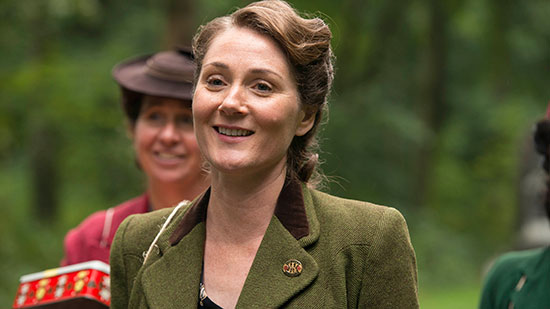
In the third episode of this season: As the Battle of Britain intensifies, Joyce gives Sarah some unwelcome advice. The stakes are raised for Pat when someone discovers her secret. Frances learns a difficult truth. Steph is increasingly concerned by Stan’s behavior on the farm. The Brindsleys receive some wonderful news.– PBS MASTERPIECE

Each week, Jambusters / Home Fires author Julie Summers will introduce us to the coming episode of Home Fires. Here she shares some historical context that will be helpful to have before you watch the period drama’s third episode of the second season, airing Sunday, April 16th, 2017 at 9 on PBS MASTERPIECE.
No spoilers, she promises, just some background detail to add to the enjoyment of the series.
You can check back on Willow and Thatch for each installment, or sign up for the newsletter now.
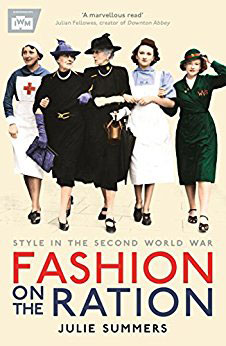 If you haven’t already read about the characters and a wide historical background for this entire season, you can do that now here.
If you haven’t already read about the characters and a wide historical background for this entire season, you can do that now here.
When you are finished reading this, you may want to see the interview with Julie about Home Fires where she discusses her book Fashion on the Ration: Style in the Second World War. It has been listed in The Times review as one of their History Books of the Year in 2015, and it will help you better understand what constraints the women in Home Fires were experiencing.
Julian Fellowes called the book “A marvelous read.”
If you are in the UK, you can visit the Fashion on the Ration: 1940s Street Style exhibit at IWM North exhibit until May 1, 2017.
The history behind the first episode of this season is here.
The history behind the second episode of this season is here.
You can order Season 2 of Home Fires on DVD here.

The Grey Areas
As episode 3 opens we find ourselves in mid-July 1940. The view from the USA looked bleak, as described in the New York Times that month. It is oft repeated but bears another repetition as it sums up so beautifully the parlous state of Britain at that moment in history:
The folk, old towns of Britain, the hills and cliffs and shores and meadows, rich with history, the homes and lives of forty-five million people, the great British traditions of human worth and dignity, the folk sayings, the deep wisdom and the long-suffering hopes of a race – these, not being pleasing to Hitler, are condemned…
From our own shores we cannot see the shadow over ancient gardens, over houses hoary with age, over the graves of poets and philosophers, and the tombs of the martyrs. We know only that one of the green and lovely oases of civilisation in the wilderness of man’s time on earth, is foully threatened and that the whole world for evermore will be the poorer if it falls.
The British Channel Islands, close to the French coast, have fallen into German hands. Hitler has told his military to plan for an invasion of the United Kingdom, to be called Operation Sea Lion. In Great Paxford Stanley Farrow firmly believes the operation will succeed. He has increased his determination to safe-guard the farm. With the help of Isobel he lays barbed wire and farm machinery across the fields.
Meantime, Little Stan has other ideas about how to prepare for the Germans. All over the country people were anxious, trying to work out who might be a spy or an enemy, and some ridiculous misunderstandings arose, as we shall see. All foreign nationals were picked up and imprisoned either in jails or in camps on the Isle of Man. Many of the men were later freed, as they were considered no serious threat to the country, and were enlisted in the Pioneer Corps. But for the time-being the atmosphere was febrile.
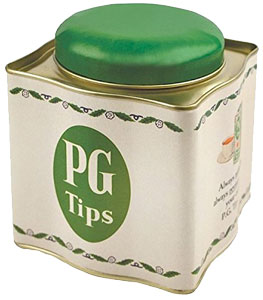 The summer of 1940 saw an increase in the number of foods rationed. In March all meat was rationed and in July tea and margarine were added. Tea rationing was particularly unpopular but there were ways to increase the quantities of food available on the ration.
The summer of 1940 saw an increase in the number of foods rationed. In March all meat was rationed and in July tea and margarine were added. Tea rationing was particularly unpopular but there were ways to increase the quantities of food available on the ration.
Gardens were turned over to vegetable growing and the Women’s Institutes were very active in growing onions and tomatoes for their local country markets. Yet some things were very hard to come by in quantity and this is where people became resourceful and traded illegally. Much has been written about the Black Market, most of it speculative, because few records were kept and although some dealers were caught by the police, many were not. What I have always found more interesting and believable is the Grey Market. That was not even an official title, so vague were the lines that people were prepared to cross. People in the countryside had greater access to fresh food during the war and were happy to exchange honey for home-made lard, or eggs for butter. It was not illegal but some frowned upon it. Mainly, I suspect, if they had nothing to exchange or barter.
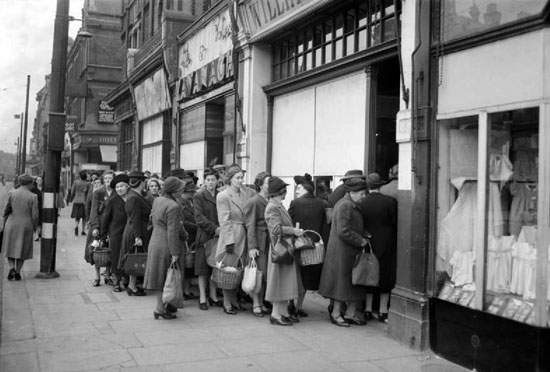
In Home Fires I wrote about a WI member called Sibyl Norcott whose father, Mr Shacklady, sailed very close to the wind. He had added pigs to the farm for the duration of the war. This way the family could have meat and lard from the pigs, cream and butter from the cows, eggs from hens and ducks, flesh from turkeys, vegetables from the garden and fruit from the orchard. Sybil’s father once swapped a ham for a hundredweight bag of sugar and both parties were delighted. She quickly made the point that Mr Shacklady did not keep all the sugar for himself but distributed it among the neighbours in their Cheshire hamlet. He then bought Sibyl a canning machine so that she could make a few bob on the side helping WIs and other local farmers’ wives to can their vegetables, beans and fruit for the winter. It was a good little business for both of them.
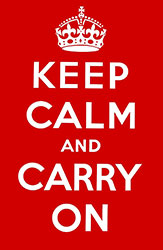 People in official positions, such as the butcher in Home Fires, had to be scrupulous with their returns. The paperwork was a headache with forms to be filled in six copies and submitted to the local Food Office along with the surrendered food coupons. Although Bryn Brindsley is, I am sure, above suspicion, a lady I know of discovered that her greengrocer would sell ‘special’ potatoes to certain customers. One day she got up the courage to ask him if she could have two pounds of his ‘special’ potatoes (these were not rationed) and when she got home she was delighted to discover she had one pound of potatoes and a one pound ingot of sugar.
People in official positions, such as the butcher in Home Fires, had to be scrupulous with their returns. The paperwork was a headache with forms to be filled in six copies and submitted to the local Food Office along with the surrendered food coupons. Although Bryn Brindsley is, I am sure, above suspicion, a lady I know of discovered that her greengrocer would sell ‘special’ potatoes to certain customers. One day she got up the courage to ask him if she could have two pounds of his ‘special’ potatoes (these were not rationed) and when she got home she was delighted to discover she had one pound of potatoes and a one pound ingot of sugar.
With so much bureaucracy there was plenty of opportunity to exploit the systems that the government put in place but in reality people understood that rationing had been introduced so everyone had fair shares and in terms of overall percentage it was a drop in the ocean in comparison with the food bought and sold on the ration. But the grey market persisted in the countryside and the impact it had on the economy will probably never be known. However, a dozen fresh eggs or a pat of fresh butter was always a welcome addition to the larder.
Meanwhile, the war has begun to take a serious turn and the final quarter of episode 3 is tense and dramatic. The juxtaposition of everyday concerns with situations that could spell life or death is where Simon Block’s drama sparkles.
Enjoy Sunday evening! – Julie Summers
 Each installment in this series of the history behind each upcoming episode will be on Willow and Thatch the Friday before the episode airs.
Each installment in this series of the history behind each upcoming episode will be on Willow and Thatch the Friday before the episode airs.
Watch each of the 6 episodes of the much-anticipated final season of this beloved series on Sundays, April 2nd – May 7th, 2017 at 9/8c on MASTERPIECE.
Need to catch up? Season 1 is available to stream for free with Amazon Prime. If you don’t already have Prime, you can get a free trial here.
The period drama Home Fires is created and written by Simon Block and inspired by Julie Summers’ book Home Fires which tells the true story of the WI on the home front from 1939-1945.

 About the book Home Fires: Away from the frontlines of World War II, in towns and villages across Great Britain, ordinary women were playing a vital role in their country’s war effort. As members of the Women’s Institute, an organization with a presence in a third of Britain’s villages, they ran canteens and knitted garments for troops, collected tons of rosehips and other herbs to replace medicines that couldn’t be imported, and advised the government on issues ranging from evacuee housing to children’s health to postwar reconstruction. But they are best known for making jam: from produce they grew on every available scrap of land, they produced twelve million pounds of jam and preserves to feed a hungry nation.
About the book Home Fires: Away from the frontlines of World War II, in towns and villages across Great Britain, ordinary women were playing a vital role in their country’s war effort. As members of the Women’s Institute, an organization with a presence in a third of Britain’s villages, they ran canteens and knitted garments for troops, collected tons of rosehips and other herbs to replace medicines that couldn’t be imported, and advised the government on issues ranging from evacuee housing to children’s health to postwar reconstruction. But they are best known for making jam: from produce they grew on every available scrap of land, they produced twelve million pounds of jam and preserves to feed a hungry nation.
Home Fires, Julie Summers’s fascinating social history of the Women’s Institute during the war (when its members included the future Queen Elizabeth II along with her mother and grandmother), provides the remarkable and inspiring true story behind the upcoming PBS Masterpiece series that will be sure to delight fans of Call the Midwife and Foyle’s War. Through archival material and interviews with current and former Women’s Institute members, Home Fires gives us an intimate look at life on the home front during World War II.
Julie Summers has written six books about the Second World War era including Stranger in the House: Women’s Stories of Men Returning from the Second World War, and When the Children Came Home: Stories of Wartime Evacuees.
Home Fires is available on DVD: The Masterpiece PBS mini-series follows a group of inspirational women in a rural Cheshire community with the shadow of World War II casting a dark cloud over their lives. The isolated village couldn’t feel further away from the impending bloodshed and battlefields and yet it is not immune from the effects of war. As the conflict takes hold, and separates the women from their husbands, fathers, sons and brothers, the characters find themselves under increasing and extraordinary pressures in a rapidly fragmenting world. By banding together as the Great Paxford Women’s Institute, they will help maintain the nation’s fabric in its darkest hour, and discover inner resources that will change their lives forever.
In the second season, Great Paxford’s eclectic band of women return for more stories from the home front as they deal with imminent threat during the Battle of Britain. As the nation finds itself increasingly beleaguered, relationships, friendships, and loyalties within the community will be tested as never before. The women find they must heighten their efforts to boost morale amidst the chaos and uncertainty enveloping the village.
You can order Season 2 of Home Fires on DVD here.

 Photo Barker Evans
Photo Barker EvansAbout Julie Summers: I was born near Liverpool and grew up first on the Wirral and then in Cheshire. Although the greater part of my childhood was spent outside pursuing any number of outdoor activities, I have always wanted to be a writer. For the first twenty years of life after university I worked in the art world but was drawn inexorably towards writing. Finally, in 2004, I gave up my job and began writing full-time. It was the best decision I have made in my career. I am passionate about writing and unembarrassed to be so. I love researching my books, especially when they involve meeting people and talking to them about their lives.
People often ask me why I am so fascinated by the Second World War. My answer is that it is not war that interests me but the way people coped. In extreme situations such as war or mountaineering ordinary people find extraordinary strength and courage. That is what I enjoy learning about.
I have a little study in the attic of our house with one of the best views in Oxford – the dreaming spires seen from Iffley. I write in the mornings and find the problem is not sticking to the routine but tearing myself away from writing at the end of the day. My companions are two Border Terriers who keep me entertained and fit. They sleep in two old wine boxes under the window in my office.
I describe myself as a biographer and historian but the most important thing for me is to be a story-teller.

If you enjoyed this post you’ll want to wander over to the Period Films List – the best costume and historical period dramas, romantic period movies, all sorted by era and theme. And be sure to see 7 Reasons to Watch Kurt Seyit and Sura – a First World War romantic historical television series now streaming.

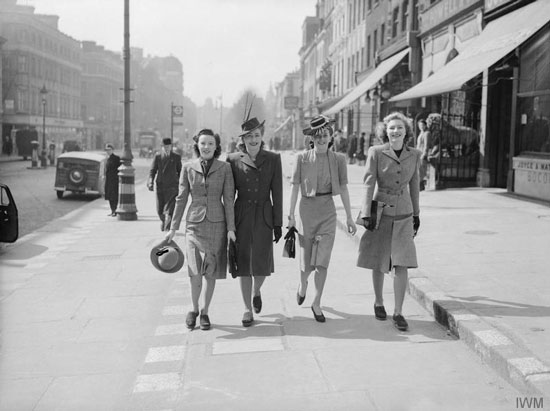



Annette Loscialpo
November 30, 2017 at 2:40 pm (6 years ago)Did not like the end. No closure for me. Please reconsider. Needs a third season… I’ve watched season one and two twice so I got to know the characters well.
Mari Beegle
April 18, 2017 at 11:51 am (7 years ago)Thanks for posting these. Masterpiece on PBS (in the U.S.) does not include these introductions when it airs Home Fires.